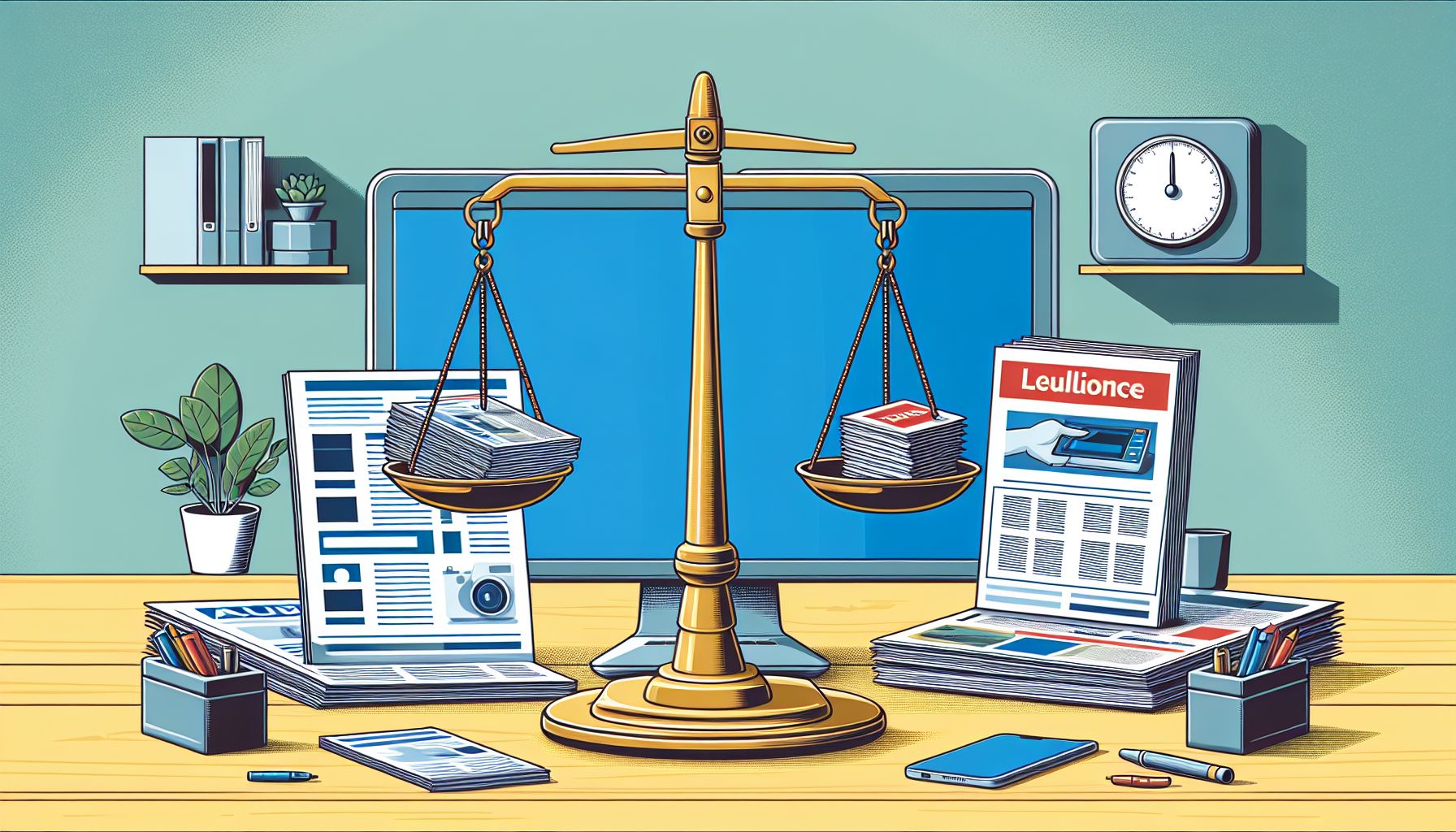In today’s digital age, where advertisements bombard our online experiences and email inboxes, it’s easy to overlook the power of traditional marketing strategies. Printed marketing, a tried-and-true method, continues to be a valuable tool for businesses to engage with their target audience in a tangible and memorable way. Although digital marketing has gained popularity due to its cost-effectiveness and wide reach, printed marketing materials have unique advantages that make them an essential component of any comprehensive marketing campaign. In this article, we’ll explore the benefits of printed marketing, its different forms, and why it remains a valuable tool for businesses in a digitized world.
The Importance of Tangibility and Branding
Printed marketing materials provide a tangible representation of a brand that customers can physically interact with. From business cards to brochures, each piece offers a tactile experience that cannot be replicated through digital means. The feel of high-quality paper, the smell of fresh ink, and the visual impact of well-designed printed materials can leave a lasting impression on recipients.
Branding is another significant aspect of printed marketing. Companies can use consistent designs, logos, and color palettes across various printed materials to reinforce their brand image. By incorporating printed materials into their marketing strategy, businesses can establish and reinforce their brand identity. Consistency across different platforms and mediums helps to build trust and recognition among customers, giving them a sense of familiarity and loyalty towards the brand.
Different Forms of Printed Marketing
Printed marketing encompasses a wide array of materials that can be customized to suit specific goals and target audiences. Some common forms of printed marketing include:
1. Business Cards
Business cards are small, portable, and serve as an introduction to a business and its representatives. They are easy to distribute during networking events, conferences, and meetings. A well-designed business card with relevant contact information helps in making a memorable first impression and facilitates future communication.
2. Brochures and Flyers
Brochures and flyers are versatile tools that allow for the detailed presentation of a company’s products or services. These printed materials are often used to illustrate the features, benefits, and pricing of offerings. They can be distributed via mail, inserted in newspapers, or handed out at trade shows to attract potential customers and generate leads.
3. Direct Mail
Direct mail continues to be an effective method for reaching target customers. By sending physical promotional materials directly to consumers’ mailboxes, businesses can capture attention in a way that digital ads often fail to do. Direct mail campaigns can include postcards, catalogs, or promotional letters, enabling businesses to personalize their message and drive customer engagement.
4. Print Advertising
Print advertising in newspapers and magazines allows businesses to reach a specific demographic or geographical audience. This form of marketing ensures that the target audience engages with the content in a more focused and uninterrupted manner. Print advertisements can be especially advantageous for local businesses targeting a specific region or niche market.
5. Banners and Signage
Banners and signage serve as effective tools for businesses to promote their products or services at trade shows, events, or physical locations. Eye-catching designs, bold typography, and strategic placement can ensure the message grabs attention and leaves a lasting impact in the minds of potential customers.
Advantages of Printed Marketing
1. Improved Visibility
Printed marketing materials tend to have a longer lifespan than digital ads, which can be quickly scrolled past or deleted. Brochures, flyers, and direct mail pieces can stay in homes, offices, or cars, serving as gentle reminders of a brand long after the initial encounter. This extended visibility boosts brand recognition and increases the likelihood of customers engaging with the advertised products or services.
2. Better Engagement and Recall
Printed materials offer a higher engagement level compared to their digital counterparts. Studies have shown that people focus and retain information better when reading print materials. The physical act of holding a brochure or flyer leads to increased cognitive engagement with the brand’s message, contributing to better recall and comprehension. This engagement often leads to longer-lasting brand impressions and higher conversion rates.
3. Targeted Marketing
Printed marketing allows businesses to have more control over their target audience. Through direct mail and print advertising, companies can strategically select specific demographics, regions, or niche markets to target. For example, a local restaurant can use flyers to reach households in a specific neighborhood, ensuring their advertising efforts are highly targeted and relevant.
4. Building Trust and Credibility
In a world where online scams and fake advertisements are a constant concern, printed marketing materials offer a sense of trustworthiness that digital ads can struggle to achieve. People tend to perceive printed materials as more legitimate and reliable, which helps businesses establish credibility and foster stronger connections with their audience.
5. Enhanced Brand Perception
Well-designed and high-quality printed materials can convey a sense of professionalism and dedication to detail. When companies invest in printed marketing, they signal to their audience that they are committed and take their branding seriously. A professionally printed brochure or a visually appealing business card can give the impression of a well-established and reputable business, enhancing the brand perception in the eyes of potential customers.
Conclusion
While digital marketing strategies continue to evolve and dominate the modern landscape, printed marketing remains a powerful and effective tool for businesses. The tangibility, branding opportunities, and versatility offered by various forms of printed materials make them an essential part of any comprehensive marketing campaign. From business cards to direct mail, each piece of print marketing has its unique advantages, helping businesses reach their target audience in a way that digital ads often cannot.
By embracing printed marketing materials, businesses can improve visibility, engagement, and recall. They can strategically target their desired audience and create a lasting impression through well-designed and trustworthy materials. In today’s saturated digital space, printed marketing provides a valuable opportunity to stand out, make an impact, and build stronger connections with customers. So, while businesses explore the ever-evolving digital marketing landscape, they should not overlook the immense potential and advantages that printed marketing brings to the table.…
Read More








